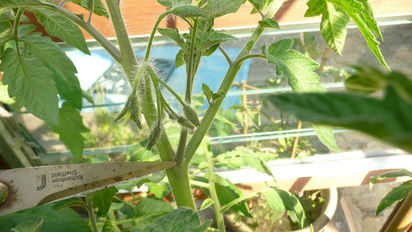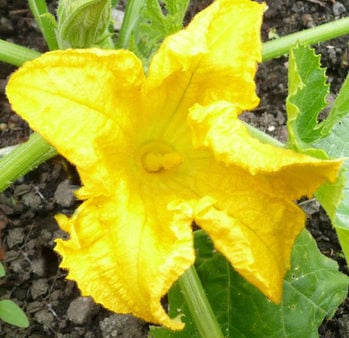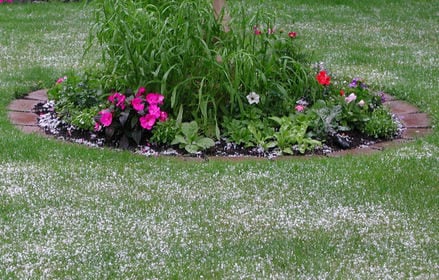Cut side shoots from Tomato plants
Posted on
All gardening advise about growing tomaotes will say to cut side shoots from Tomato plants - but why and what are side shoots? Why does this matter when growing tomatoes?
Why, it is necessary because Tomatoes are very vigorous plants and you need to contain the plant to the main frame work. If every side shoot was allowed to grow the plant would be massive, all leaf and few flowers with a resulting poor crop of tomatoes. When growing tomatoes not only should you cut off all side shoots, but also thin and reduce the amount of foliage particularly as the fruits form.
What are side shoots? See below the scissors point to the side shoot.

For more about growing Tomatoes

 Courgettes are generally problem free, although prone to powdery mildew late in the season as the nights turn colder and especially if it has been a dry summer. Courgettes are also much effected by the weather and dislike cool conditions which can reduce pollination and so yields. Another problem of all of this family, squashes and cucumbers is they can root off at the stem where it meets the soil. This is much more likely to happen in a colder summer where after rain the wet lies in the soil for longer and newly planted courgettes which are not yet established are the most prone. If happy Courgettes fruit prolifically and two./three plants is usually enough for any courgette loving family.
Courgettes are generally problem free, although prone to powdery mildew late in the season as the nights turn colder and especially if it has been a dry summer. Courgettes are also much effected by the weather and dislike cool conditions which can reduce pollination and so yields. Another problem of all of this family, squashes and cucumbers is they can root off at the stem where it meets the soil. This is much more likely to happen in a colder summer where after rain the wet lies in the soil for longer and newly planted courgettes which are not yet established are the most prone. If happy Courgettes fruit prolifically and two./three plants is usually enough for any courgette loving family. June is a fantastic time in the garden everything is growing so fast its hard to keep up. Finally frosts are over and all the tender plants and veggies can be planted out for the rest of the summer, even Squashes can be outside now. Pity the weather isn't a bit kinder, if its wet and chilly where you are its best to delay planting bedding for another week or so. There is a lot to do in June and the Sunday Gardeners calendar has some helpful tips and advice,
June is a fantastic time in the garden everything is growing so fast its hard to keep up. Finally frosts are over and all the tender plants and veggies can be planted out for the rest of the summer, even Squashes can be outside now. Pity the weather isn't a bit kinder, if its wet and chilly where you are its best to delay planting bedding for another week or so. There is a lot to do in June and the Sunday Gardeners calendar has some helpful tips and advice,